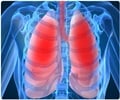Researchers have defined a new type of immune response in patients with severe asthma and chronic obstructive pulmonary disorder - a finding that could pave way for the development
A new type of immune response in patients with asthma and chronic obstructive pulmonary disorder could be the harbinger for the development of customized therapies for these diseases, researchers have revealed.
The team from Washington University School of Medicine in St. Louis believes that the study results can significantly improve diagnosis and treatment of patients with chronic inflammatory lung disease."We've cracked the first part of the molecular code that links a viral infection to the later development of chronic inflammatory diseases like asthma and COPD," Nature quoted senior author Michael Holtzman, the Selma and Herman Seldin Professor of Medicine, director of the Division of Pulmonary and Critical Care Medicine and a pulmonary specialist at Barnes-Jewish Hospital, as saying.
"With this information, we can more precisely diagnose and monitor these types of diseases and then better target our treatment to specific abnormalities. That's a big step forward from simply monitoring breathing status," he added.
The immune response can be identified by examining specific types of inflammatory cells or molecules in the lung or potentially in the bloodstream. It would provide physicians with a more accurate way of diagnosis and treatment of lung disease.
It would also help in determining the condition of the patients, whether it is mild, moderate or severe along with efficiency of the treatment.
"With our results, we can now work on developing more rational ways to diagnose and monitor lung conditions such as asthma and COPD," said Holtzman.
Advertisement
The study in mice infected with a respiratory virus showed that when the mice got over the infection, they were left with chronic airway disease characterized by mucus production and increased airway reactivity to an inhaled irritant.
Advertisement
The combination of persistent activity and positive feedback led to the long-term production of IL-13 as well as other substances thereby causing continuous inflammation in the lung tissue leading to chronic lung disease.
The same immune process could also be seen in lungs of people with severe asthma and COPD.
The team also identified another immune response where the virus activated an allergic-type antibody response to cause the later development of disease.
"Now, we have identified two new immune pathways that lead to chronic lung disease, and we already have evidence for additional pathways," said Holtzman.
"Our goal is to find distinct biological markers for each pathway. This will tell us how to diagnose and what to treat,'" he added.
The study is published online journal Nature Medicine.
Source-ANI
RAS/L











